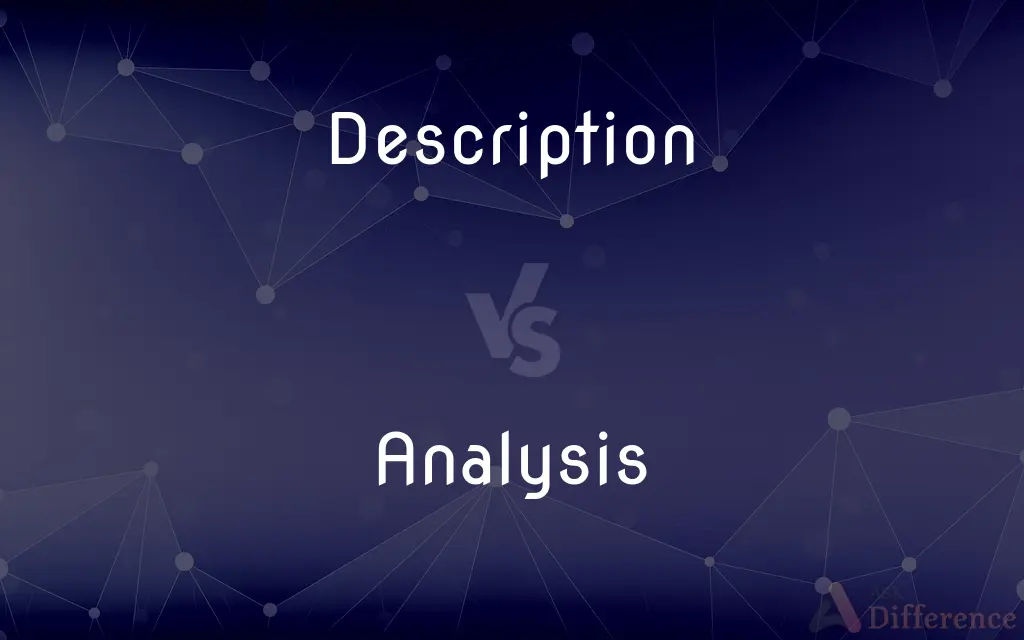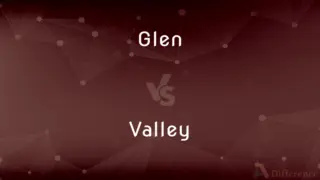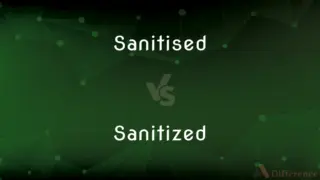Description vs. Analysis — What's the Difference?
By Fiza Rafique & Urooj Arif — Updated on April 7, 2024
Description involves detailing what is observed without interpretation, while analysis digs deeper, evaluating and interpreting those details.

Difference Between Description and Analysis
Table of Contents
ADVERTISEMENT
Key Differences
Description focuses on reporting what is observed, seen, or heard, often in a detailed and systematic way. It involves presenting facts, figures, and characteristics without providing any interpretation or drawing conclusions. Analysis, on the other hand, goes beyond mere observation to include interpretation, evaluation, and explanation. It involves looking at the why and how, not just the what.
Descriptions aim to create a vivid picture for the reader or listener, allowing them to understand what something is like or how an event unfolded based solely on observable attributes. Analysis seeks to understand underlying patterns, causes, and relationships. It is a more complex process that requires critical thinking and often employs specific methodologies to break down and examine the components of a subject to understand its overall structure and meaning.
While description might detail the color, shape, size, and location of an object, analysis would explore the significance of these attributes, their relationship to each other, and their impact or meaning in a larger context. Description answers the question of "What do I see?" whereas analysis addresses "What does this mean?" and "Why does it matter?"
In academic writing, description and analysis are often used together. A clear and accurate description provides the foundation for effective analysis. Without a solid descriptive base, analysis might lack precision or relevance, leading to conclusions that are not supported by the data.
The transition from description to analysis signifies a move from objective to subjective territory. While descriptive accounts aim to maintain objectivity by sticking to observable facts, analysis introduces a subjective element through interpretation, evaluation, and speculation about causes and effects.
ADVERTISEMENT
Comparison Chart
Purpose
To depict or report observable facts and details.
To interpret, evaluate, and draw conclusions.
Focus
Observables: what is seen, heard, or felt.
Relationships, patterns, and underlying meanings.
Methodology
Systematic observation and detailed reporting.
Critical thinking and evaluative methodologies.
Outcome
A vivid, factual account.
Insightful interpretations and evaluations.
Role in Academia
Provides foundational information.
Drives conclusions and advancements in knowledge.
Compare with Definitions
Description
Detailed account.
Her description of the landscape was so detailed that you could imagine being there.
Analysis
Understanding patterns.
Through analysis, she identified a pattern of behavior indicative of broader societal issues.
Description
Factual reporting.
In his description, he listed the sequence of events without offering any opinions.
Analysis
Subjective insight.
Her analysis offered a personal interpretation of the data, highlighting potential biases.
Description
Foundation for analysis.
The scientist's description of the experiment setup was crucial for understanding the analysis that followed.
Analysis
Interpretative reasoning.
His analysis of the novel explored themes of freedom and restraint.
Description
Non-interpretative.
The description of the historical event stuck strictly to what happened, avoiding interpretations.
Analysis
Critical evaluation.
The analysis included a critique of the character's motivations and their implications.
Description
Objective observation.
The description of the painting included its size, colors, and the scene it depicted.
Analysis
Explains significance.
The analysis explained the significance of the experiment's results in the context of current research.
Description
Description is the pattern of narrative development that aims to make vivid a place, object, character, or group. Description is one of four rhetorical modes (also known as modes of discourse), along with exposition, argumentation, and narration.
Analysis
Analysis is the process of breaking a complex topic or substance into smaller parts in order to gain a better understanding of it. The technique has been applied in the study of mathematics and logic since before Aristotle (384–322 B.C.), though analysis as a formal concept is a relatively recent development.The word comes from the Ancient Greek ἀνάλυσις (analysis, "a breaking-up" or "an untying;" from ana- "up, throughout" and lysis "a loosening").
Description
A spoken or written account of a person, object, or event
People who had seen him were able to give a description
Analysis
Detailed examination of the elements or structure of something
Statistical analysis
An analysis of popular culture
Description
A type or class of people or things
It is laughably easy to buy drugs of all descriptions
Analysis
Short for psychoanalysis
Other schools of analysis have evolved out of the original disciplines established by Freud
Description
The act, process, or technique of describing.
Analysis
The separation of an intellectual or material whole into its constituent parts for individual study.
Description
A statement or an account describing something
Published a description of the journey.
Gave a vivid description of the game.
Analysis
The study of such constituent parts and their interrelationships in making up a whole.
Description
A pictorial representation
Monet's ethereal descriptions of haystacks and water lilies.
Analysis
A spoken or written presentation of such study
Published an analysis of poetic meter.
Description
A kind or sort
Cars of every size and description.
Analysis
The separation of a substance into its constituent elements to determine either their nature (qualitative analysis) or their proportions (quantitative analysis).
Description
A sketch or account of anything in words; a portraiture or representation in language; an enumeration of the essential qualities of a thing or species.
Give a verbal description of the events
A realistic description
Analysis
The stated findings of such a separation or determination.
Description
The act of describing; a delineation by marks or signs.
Analysis
A branch of mathematics principally involving differential and integral calculus, sequences, and series and concerned with limits and convergence.
Description
A set of characteristics by which someone or something can be recognized.
The zoo had no lions, tigers, or cats of any description.
Analysis
The method of proof in which a known truth is sought as a consequence of a series of deductions from that which is the thing to be proved.
Description
(taxonomy) A scientific documentation of a taxon for the purpose of introducing it to science.
The type description of the fungus was written by a botanist.
Analysis
(Linguistics) The use of function words such as prepositions, pronouns, or auxiliary verbs instead of inflectional endings to express a grammatical relationship; for example, the cover of the dictionary instead of the dictionary's cover.
Description
(linguistics) The act or practice of recording and describing actual language usage in a given speech community, as opposed to prescription, i.e. laying down norms of language usage.
Analysis
Psychoanalysis.
Description
(linguistics) A descriptive linguistic survey.
Analysis
Systems analysis.
Description
The act of describing; a delineation by marks or signs.
Analysis
(countable) Decomposition into components in order to study (a complex thing, concept, theory etc.).
Description
A sketch or account of anything in words; a portraiture or representation in language; an enumeration of the essential qualities of a thing or species.
Milton has descriptions of morning.
Analysis
(countable) The result of such a process.
Description
A class to which a certain representation is applicable; kind; sort.
A difference . . . between them and another description of public creditors.
The plates were all of the meanest description.
Analysis
The mathematical study of functions, sequences, series, limits, derivatives and integrals.
Mathematical analysis
Description
A statement that represents something in words
Analysis
Proof by deduction from known truths.
Description
The act of describing something
Analysis
The process of breaking down a substance into its constituent parts, or the result of this process.
Description
Sort or variety;
Every description of book was there
Analysis
The analytical study of melodies, harmonies, sequences, repetitions, variations, quotations, juxtapositions, and surprises.
Analysis
Psychoanalysis.
Analysis
A resolution of anything, whether an object of the senses or of the intellect, into its constituent or original elements; an examination of the component parts of a subject, each separately, as the words which compose a sentence, the tones of a tune, or the simple propositions which enter into an argument. It is opposed to synthesis.
Analysis
The separation of a compound substance, by chemical processes, into its constituents, with a view to ascertain either (a) what elements it contains, or (b) how much of each element is present. The former is called qualitative, and the latter quantitative analysis.
Analysis
The tracing of things to their source, and the resolving of knowledge into its original principles.
Analysis
The resolving of problems by reducing the conditions that are in them to equations.
Analysis
A syllabus, or table of the principal heads of a discourse, disposed in their natural order.
Analysis
The process of ascertaining the name of a species, or its place in a system of classification, by means of an analytical table or key.
Analysis
An investigation of the component parts of a whole and their relations in making up the whole
Analysis
The abstract separation of a whole into its constituent parts in order to study the parts and their relations
Analysis
A form of literary criticism in which the structure of a piece of writing is analyzed
Analysis
The use of closed-class words instead of inflections: e.g., `the father of the bride' instead of `the bride's father'
Analysis
A branch of mathematics involving calculus and the theory of limits; sequences and series and integration and differentiation
Analysis
A set of techniques for exploring underlying motives and a method of treating various mental disorders; based on the theories of Sigmund Freud;
His physician recommended psychoanalysis
Common Curiosities
What is analysis?
Analysis involves interpreting, evaluating, and drawing conclusions from data or observations.
Can you have analysis without description?
Analysis typically relies on description to provide the factual basis for interpretation, making description fundamental to the analytical process.
How do description and analysis differ in purpose?
Description aims to provide a detailed account of observables, while analysis seeks to understand underlying patterns and meanings.
Can analysis be biased?
Yes, analysis can be influenced by the analyst's perspectives, assumptions, and choices of methodology, introducing bias.
How does analysis contribute to academic research?
Analysis drives conclusions, theories, and advancements in knowledge by interpreting data and evaluating hypotheses.
What is description?
Description is the process of depicting or reporting observable facts and details without interpretation.
What role does description play in storytelling?
In storytelling, description creates vivid imagery and context, allowing readers to visualize scenes and characters.
Why is it important to differentiate between description and analysis in writing?
Differentiating between the two ensures clarity, supports accurate interpretation, and enhances the effectiveness of communication.
Why is analysis important?
Analysis is crucial for understanding complex issues, making informed decisions, and advancing knowledge in various fields.
Is description purely objective?
While description strives for objectivity by focusing on observable facts, the choice of details can introduce a subjective element.
How do journalists use description and analysis?
Journalists use description to report events and details accurately, and analysis to provide context, evaluate implications, and offer insights.
How does the audience's understanding benefit from a mix of description and analysis?
A mix of description and analysis provides a comprehensive understanding, offering both concrete information and deeper insights.
What skills are important for effective analysis?
Critical thinking, evaluative skills, and the ability to identify patterns and underlying principles are crucial for effective analysis.
How do description and analysis work together in scientific research?
In scientific research, description provides a clear account of experiments and observations, while analysis interprets these findings to contribute to scientific knowledge.
In what ways does analysis evolve from description?
Analysis evolves from description by building on detailed observations to explore significance, relationships, and causality, moving from what is to what it means.
Share Your Discovery

Previous Comparison
Glen vs. Valley
Next Comparison
Sanitised vs. SanitizedAuthor Spotlight
Written by
Fiza RafiqueFiza Rafique is a skilled content writer at AskDifference.com, where she meticulously refines and enhances written pieces. Drawing from her vast editorial expertise, Fiza ensures clarity, accuracy, and precision in every article. Passionate about language, she continually seeks to elevate the quality of content for readers worldwide.
Co-written by
Urooj ArifUrooj is a skilled content writer at Ask Difference, known for her exceptional ability to simplify complex topics into engaging and informative content. With a passion for research and a flair for clear, concise writing, she consistently delivers articles that resonate with our diverse audience.
















































